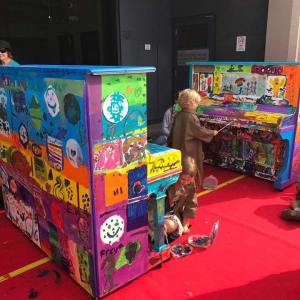Welcome back to Term 2!
I hope our students have enjoyed some extra musical experiences over the school holidays.
In the rush of farm stays, soccer camps, holiday programs and fun parks, musical experiences can often be forgotten.
I was fortunate enough to attend 3 world class concerts over the holidays. Two were classical and one was jazz/funk/rock.
For me several things were delightful:
- watching the differences between genres and how each perform
- seeing passion and joy come through all performances
- knowing that there are so many musical options all over Sydney, every night
- bumping in to friends who were also attending
There are wonderful ways to get children involved in music. Certainly, children could not be taken to the jazz concert I attended, as it was held in a licensed venue. However the two classical concerts were both possible events to be enjoyed by the slightly older child.
Another fantastic and ongoing event is the Sydney Flash Mob choir, under the baton of Richard Gill. I signed up for this as I love singing in groups, and am always keen to hear from Mr Gill, who is so passionate about music and music education. https://www.cityrecitalhall.com/events/flash-mob-choir
Musica Viva’s Festival was held during the holidays, and they have a magnificent kids program. Unfortunately it will be another year until this comes round again, but most of our children have fortunately experienced the professionalism and joy of Musica Viva performances in their schools.
Here is one of the artistic activities on offer at the Conservatorium last week. 
So even as we return to the busyness of school and other extra curricular activities, please do remember that it’s great to supplement your children’s music lessons with experiences of music out there in the real world!


